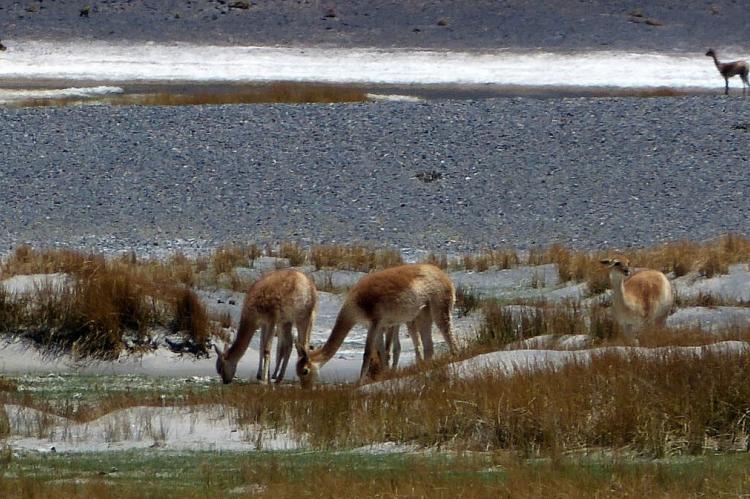San Guillermo National Park and Biosphere Reserve (Argentina)
San Guillermo Biosphere Reserve is located in San Juan Province, Argentina. It represents and protects the mixed mountain and highland ecosystems in the foothills and mountains of the Andes. The San Guillermo National Park occupies the core zone.
San Guillermo National Park
San Guillermo National Park is in the Iglesia Department of San Juan Province, Argentina. It was established in 1999 and today occupies the core zone of the much larger San Guillermo Biosphere Reserve.
The National Park has an area of 166,000 ha (410,000 acres) in the high Andes and includes puna grassland and mountain summits. It was initially set up as a provincial reserve in 1972.
Its main objective is to preserve the natural habitat of vicuñas while protecting the other plants and animals of this mountain area.
Vegetation consists of barren deserts, grasslands, and a few wetlands in the high, arid Andes. Fauna include vicuña, guanaco, culpeo fox, Andean mountain cat, cougar, and Andean condor.
San Guillermo Biosphere Reserve
The San Guillermo Biosphere Reserve in the northwest of San Juan Province, Argentina, occupies the western sector of Catamarca, La Rioja, San Juan, and Mendoza Provinces.
The Biosphere Reserve represents mixed mountain and highland systems in the foothills and mountains of the Andes. The altitude of the Reserve varies between 1,000 - 6,000 m (3,300 - 19,700 ft).
The core, buffer, and transition zones have an area of approximately 981,000 ha (2,420,000 acres) and fall within what was originally set up as a provincial reserve. The San Guillermo National Park occupies the core zone.
The San Guillermo Biosphere Reserve also comprises important archaeological sites and ancient indigenous villages in the Cerro las Tórtolas, Cerro las Flechas, and Cerro del Toro, an ancient ceremonial monument.
Approximately 300 people live in the Biosphere Reserve temporarily, mainly engaged in mining, raising cattle, and hunting.
Flora and Fauna
The Biosphere Reserve comprises two phytogeographical regions: the Chaco and Andean. The Chaco is a humid and swampy region extending from Bolivia and Paraguay to northern Argentina.
The Andean Region consists of steep and rugged highlands with river valleys and lakes, which support migrating species such as the Andean flamingo and mammals such as vicuna (Vicugna vicugna) and guanaco (Lama guanicoe).
The San Guillermo Biosphere Reserve contains grasslands with or without shrubs and sub-desertic open matorral with valleys and steep slopes.
Flora consists of scattered dwarf shrubs interspersed with coarse grasses, herbaceous plants, and much bare ground.
Shrubs include Adesmia, Patrastrephia, Fabiana, Azorella and Ephedra. Grasses present include Stipa, Calamagrostis and Festuca, and flowering plants include Astragalus, Tropaeolum, Phacelia, and Glandularia.
Major habitats and land cover types include:
-
mountains with river valleys, including Adesmia horrida, A. pinifolia, Senecio oreophyton, Artemisa mendozana etc.
-
grassland characterized by Stipa frigida, Lacium spp., Adesmia horrida etc.
-
sub-desertic open matorral with valleys and steep slopes, including species such as Larrea divaricata, Bulnesia retama, and Atriplex lampa
-
open shrub matorral
Fauna includes the vicuña, the guanaco, the culpeo fox, the Andean mountain cat, the cougar, the southern viscacha, the short-tailed chinchilla, Darwin's rhea, various ducks and geese, and the Andean condor.

